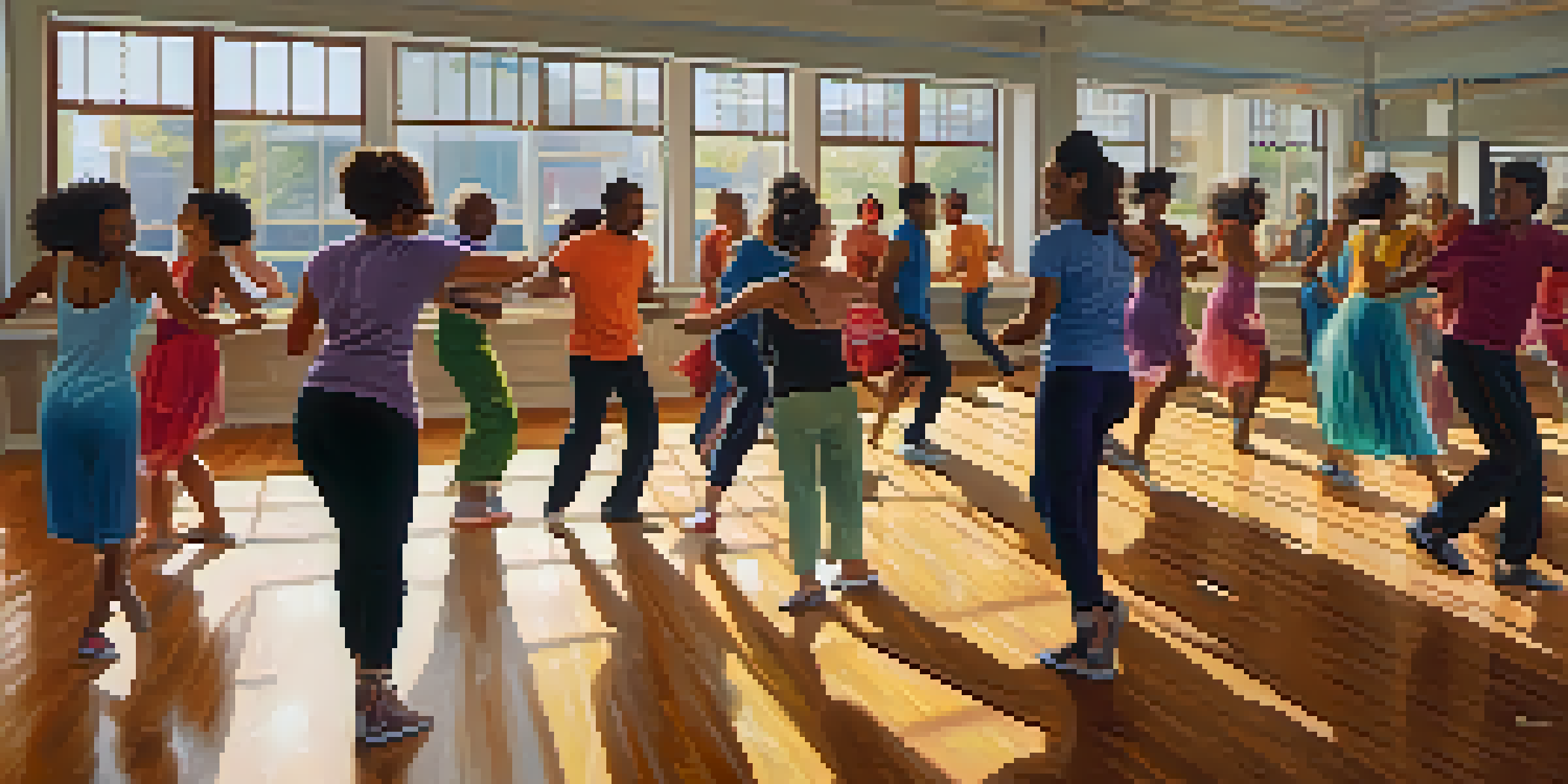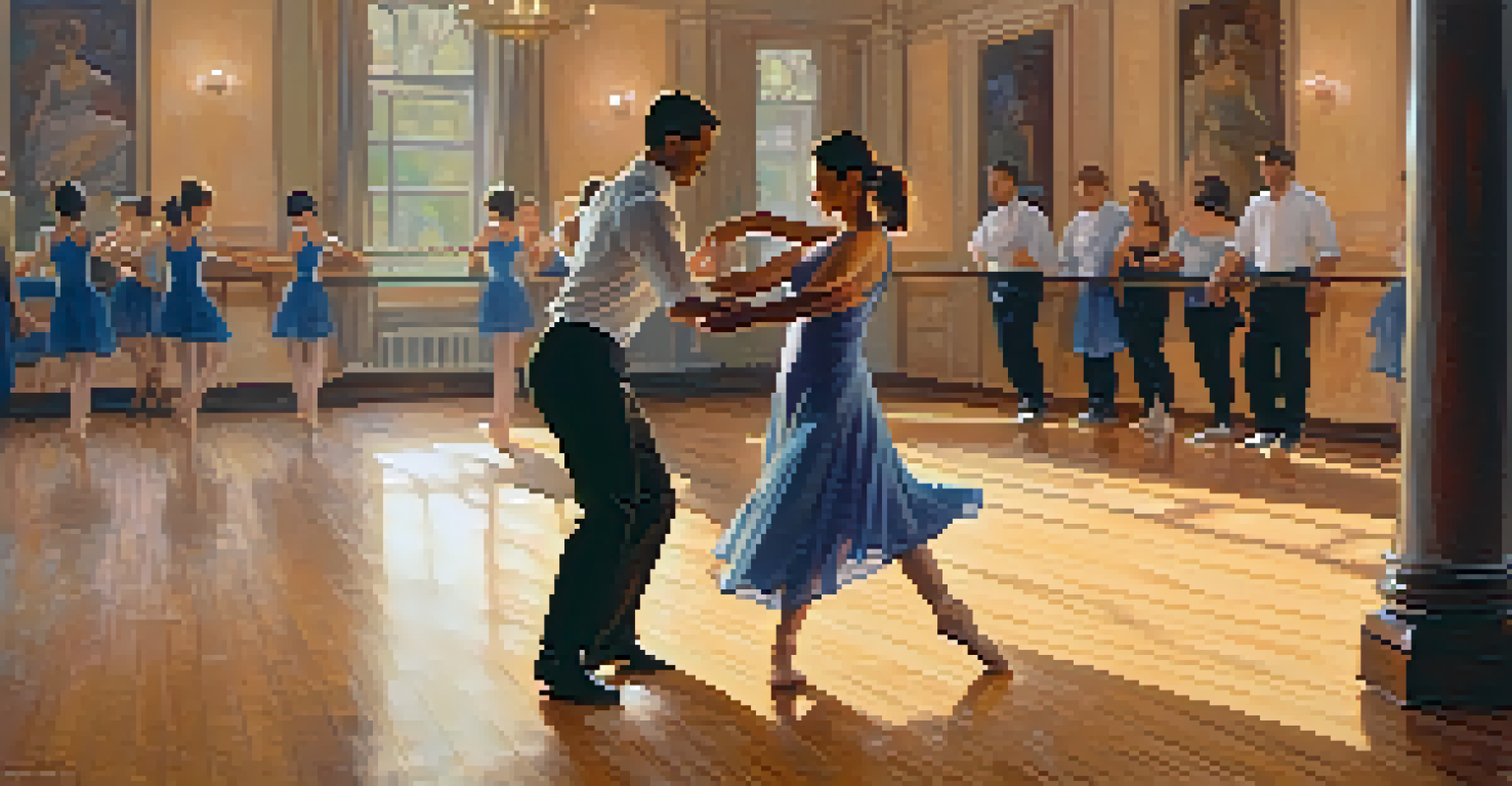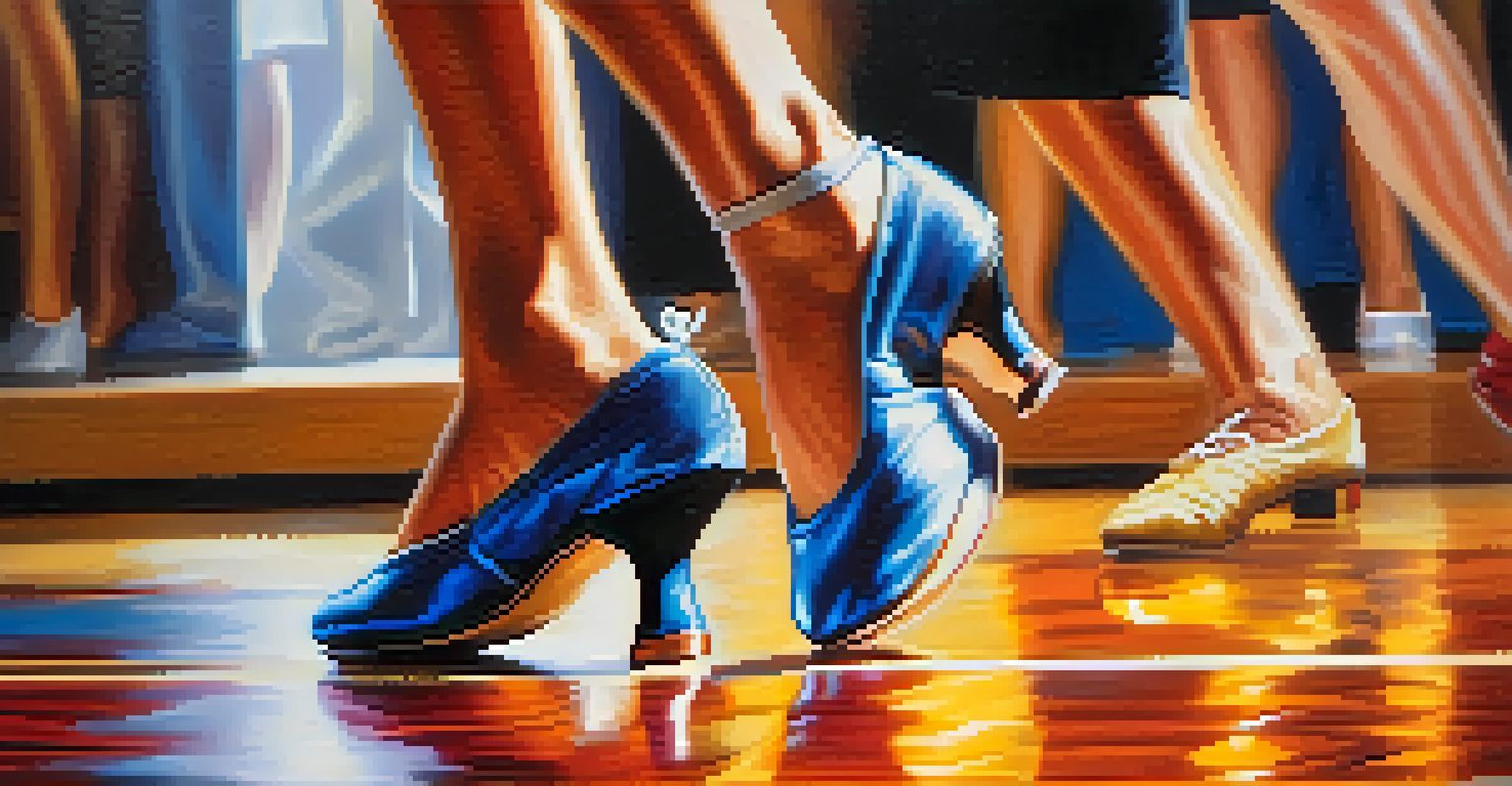Enhancing Teamwork and Collaboration through Dance Classes

The Power of Dance in Team Building
Dance is more than just movement; it's a powerful tool for bringing people together. When teams participate in dance classes, they engage in a shared experience that fosters connection. This collective engagement helps break down barriers and encourages open communication among team members.
Dance is the hidden language of the soul.
As individuals learn to sync their movements, they also learn to sync their thoughts and ideas. This process mirrors the teamwork required in professional settings, making dance a unique way to enhance collaboration skills. The rhythm and flow of dance allow participants to explore dynamics that can translate directly into a workplace environment.
Moreover, the fun and enjoyment of dancing can lead to improved morale. When team members are having fun together, they are more likely to feel comfortable expressing their ideas and contributing to discussions, leading to a more cohesive and productive team.
Building Trust Through Dance
Trust is a cornerstone of effective teamwork, and dance can help cultivate this essential quality. In dance classes, participants often rely on one another for support, whether it's through partnering or group routines. This reliance fosters a sense of trust as team members learn to depend on each other.

As dancers become more comfortable with each other, they also become more open to taking risks. Just like in the workplace, where team members need to trust their colleagues to share ideas and feedback, dance encourages vulnerability in a supportive environment. This builds a foundation of trust that can enhance collaboration.
Dance Builds Team Trust
Participating in dance fosters reliance among team members, enhancing trust that can improve collaboration in the workplace.
Trust built in dance classes can spill over into professional interactions. When team members feel they can rely on each other in a dance context, they may carry that trust into meetings and projects, improving overall team dynamics and effectiveness.
Encouraging Communication Through Movement
Effective communication is crucial for any successful team, and dance naturally encourages this skill. In dance classes, participants must communicate non-verbally through movements and expressions. This practice helps team members understand the importance of body language, a key aspect of communication.
Creativity is intelligence having fun.
As dancers learn to interpret their partner's movements, they also develop active listening skills. This mirrors the way team members should listen to each other's ideas in a work setting. The ability to read and respond to non-verbal cues can enhance overall communication within a team.
Additionally, dance fosters an environment where feedback is crucial. Participants learn to give and receive constructive criticism in a supportive way, which can translate into improved communication practices in the workplace. This dynamic encourages a culture of openness and collaboration.
Fostering Creativity and Innovation Together
Dance is a form of artistic expression that can spark creativity among team members. In dance classes, individuals are encouraged to explore their creativity, whether through improvisation or choreographing routines. This creative exploration can inspire new ideas and approaches in a professional context.
When teams engage in creative activities like dance, they break free from conventional thinking. This shift in perspective can lead to innovative solutions to workplace challenges. Just like dancers must think on their feet, team members learn to adapt and innovate in real-time.
Dance Enhances Communication Skills
Through non-verbal expression in dance, team members develop active listening and body language skills crucial for effective workplace communication.
Moreover, collaborative creativity in dance can strengthen relationships. As team members brainstorm ideas and experiment with movements together, they build a sense of camaraderie that fosters collaboration. This shared creative process can enhance teamwork and lead to a more innovative workplace culture.
Breaking Down Hierarchies with Dance
Dance classes provide a unique opportunity to flatten hierarchies within a team. In a dance setting, everyone is equal, regardless of their job title or role. This egalitarian approach allows team members to connect on a personal level, breaking down barriers that may exist in a traditional workplace.
As team members dance together, they learn to value each other's contributions, regardless of their position in the company. This shift can lead to a more inclusive workplace culture, where everyone feels empowered to share their ideas and insights. The collective nature of dance encourages collaboration and respect for diverse perspectives.
Moreover, this sense of equality can lead to increased engagement and participation in team discussions. When team members feel that their voices matter, they are more likely to contribute actively and collaborate effectively, enhancing overall team performance.
Enhancing Problem-Solving Skills Through Dance
Dance classes often present challenges that require quick thinking and problem-solving. Whether it's mastering a new routine or adjusting to a partner's movements, participants learn to navigate obstacles creatively. This experience can translate directly into the workplace, where teams face complex challenges daily.
In dance, individuals must think critically and adapt their movements in real-time. This practice sharpens problem-solving skills, encouraging team members to approach challenges with a positive and solution-oriented mindset. These skills are essential for navigating the dynamic nature of today’s work environment.
Creativity Flourishes in Dance
Engaging in dance encourages creative exploration and collaboration, inspiring innovative solutions to workplace challenges.
Furthermore, the collaborative nature of dance allows teams to tackle problems together. As they learn to communicate and support each other, they can brainstorm solutions more effectively. This shared problem-solving experience can enhance team cohesion and lead to better outcomes in professional projects.
Creating Lasting Bonds Through Shared Experiences
One of the most significant benefits of dance classes is the lasting bonds that form between participants. As team members share the experience of learning and growing together, they create memories that strengthen their relationships. These connections can enhance teamwork and collaboration long after the dance class ends.
Shared experiences foster a sense of belonging and community within a team. When individuals feel connected to their colleagues, they are more likely to engage and contribute positively to the team's goals. This sense of unity can lead to increased motivation and productivity.

Ultimately, the bonds formed in dance classes can translate into a more harmonious work environment. When team members trust and enjoy working with each other, they are more likely to collaborate effectively and achieve their shared objectives.